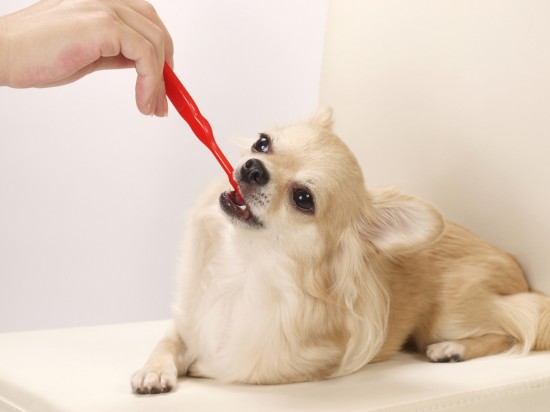
燰on Willebrand Disease is a bleeding disorder that is common in several dog燽reeds, including, Poodles, Shelties, and燬cottish Terriers. It is most common in Dobermans.
Von Willebrand Disease (vWD) is a common health issue in Dobermans. It is a bleeding disease just like hemophilia in humans that can put Dobermans life at risk from surgery or injury. Although it exists in other breeds, such as Poodles, Shelties, Scottish Terriers and the Pembroke Welsh Corgi, it is most common in Dobermans. In a study of 15,000 Dobermans screened, 70% were carriers. Most of these dogs were not clinically affected.
Some of the symptoms of Von Willebrands Disease are excessive bleeding, nosebleeds, bleeding from the gums and bloody stools or urine. This requires special consideration before surgery and special attention to injuries. Physical and emotional stress can worsen bleeding. The treatment for a bleeding episode is a blood transfusion. Certain drugs should be avoided in dogs with Von Willebrand Disease. These include, aspirin, antihistamines, sulfur based antibiotics, ibuprofen and amoxicillin. Your Veterinarian will know how to handle treating your dog.
There are 3 types of vWD. Type I is the mildest form of the disease and is the type most common in Dobermans. Type 2 is more severe and is more common in German Shorthaired Pointers. Type 3 is the most severe form and is usually found in Scottish Terriers and Shelties, although as mentioned above, there are several other breeds that can carry this gene.
Besides, surgery or injury, Dobermans are at risk for excessive bleeding during whelping and during the docking of the puppies tails. It is so important to know that your Doberman and his breeding line are tested and do not have Von Willebrand affected breeding dogs.
One way to test for Von Willebrand Disease is a blood titre test called Elisa. This test is not very accurate. We had one of our dogs test positive on the Elisa test but was clear on the DNA test. The only true way to test for this genetic disease is through a DNA test, which is done with a swab and costs around $140.00. There are 3 levels of results for the DNA test, clear, carrier or affected. What this means in terms of breeding Dobermans is somewhat complicated. It is safe to breed a vWD clear Doberman with a vWD carrier. It is estimated that the bad gene would be eliminated over a period of 2-3 generations.
Breeding 2 Dobermans that are affected (actually suffer excessive bleeding) will always produce 100%affected puppies. Breeding an affected dog with a carrier will result in half the puppies being affected and half being carriers. Breeding 2 carriers of vWD will result in 25% of the pups being affected, 50% will be carriers and 25% will be normal. Breeding a carrier of vWD to a normal Doberman will produce a litter of half carrier puppies and half normal puppies.
You might be wondering why a breeder or anyone would breed a Doberman that has any indication of vWD. Why not breed only dogs with no vWD, as affected or carries of the disease? This would be the ideal situation but only 1/3 of Dobermans are normal, meaning they are not affected with, or carrying the disease. Using only normal dogs for breeding would greatly reduce the gene pool which would have a negative impact on the breed. Doberman breeders have worked so long to perfect the Dobermans temperament and health after the problems of the 1970s. To eliminate 2/3 of the breeding population would result in the same problems we worked to correct.
It is important to buy a Doberman puppy from a reputable breeder who has tested his dogs for Von Willebrand Disease. Be an informed buyer.
Article Source: http://EzineArticles.com/?expert=Joseph_M_Sabol
Article Tags: Willebrand Disease, Excessive Bleeding
 What Is A Ketogenic Diet And Is It Suitable For Dogs?
What Is A Ketogen
What Is A Ketogenic Diet And Is It Suitable For Dogs?
What Is A Ketogen
 How To Tell If Your Dog Has Dental Problems
How To Tell If Yo
How To Tell If Your Dog Has Dental Problems
How To Tell If Yo
 10 Very Talkative Dog Breeds
10 Very Talkative
10 Very Talkative Dog Breeds
10 Very Talkative
 Understanding The Learning Theory Behind Pet Training
Understanding The
Understanding The Learning Theory Behind Pet Training
Understanding The
 How To Deal With Bee & Wasp Stings In Dogs
How To Deal With
How To Deal With Bee & Wasp Stings In Dogs
How To Deal With
Copyright © 2005-2016 Pet Information All Rights Reserved
Contact us: www162date@outlook.com